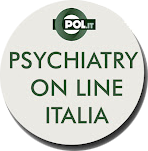The longitudinal study done by the ''Journal of Adolescent Health'' examines the relationship between adolescents’ sports participation in school and mental health of the same early adulthood. Depressive symptoms, stress and a poor self-evaluation of oneself in adolescence can be correlated with a poor state of physical and mental health in adulthood.
It is important to monitor the risk factors and increase protective factors creating preventive programs to avoid the arrival of a more severe psychopathology in adulthood. The active neuronal plasticity and adolescent dynamic has changed with precise and targeted '' tools ''.
One of these ''tools '' is sport, which can become a major protective factor for mental health of young people who engage in regular sports activities at school.
Several researchers agree that '' premature '' physical activity is associated with protective neurobiological changes as increased HPA axis adjustment, the monoamine system, increasing neurotropic, increasing self-esteem, self-evaluation and emotional self-regulation with increased social interaction.
The longitudinal study looks for a correlation between adolescent school sports and major depression, perceived stress and self-assessment of one’s state of health in early adulthood. The study takes into consideration 1,293 students (53% female) from 10 different secondary schools in Canada, where the boys practiced about 11 different sports (basketball, soccer, rugby, wrestling, swimming, gymnastics, volleyball, hockey, etc.). Only 853 participants have successfully finished the longitudinal study, of these, the average age was 20.4 years with 54% of females. Only 6% reported a diagnosed mood disorder.
It is important to monitor the risk factors and increase protective factors creating preventive programs to avoid the arrival of a more severe psychopathology in adulthood. The active neuronal plasticity and adolescent dynamic has changed with precise and targeted '' tools ''.
One of these ''tools '' is sport, which can become a major protective factor for mental health of young people who engage in regular sports activities at school.
Several researchers agree that '' premature '' physical activity is associated with protective neurobiological changes as increased HPA axis adjustment, the monoamine system, increasing neurotropic, increasing self-esteem, self-evaluation and emotional self-regulation with increased social interaction.
The longitudinal study looks for a correlation between adolescent school sports and major depression, perceived stress and self-assessment of one’s state of health in early adulthood. The study takes into consideration 1,293 students (53% female) from 10 different secondary schools in Canada, where the boys practiced about 11 different sports (basketball, soccer, rugby, wrestling, swimming, gymnastics, volleyball, hockey, etc.). Only 853 participants have successfully finished the longitudinal study, of these, the average age was 20.4 years with 54% of females. Only 6% reported a diagnosed mood disorder.
We can notice the correlation between the increase of years of sports participation and the decrease in depressive symptoms, decreased stress and increased assessment of one’s state of mental health.
In conclusion we can affirm that adolescents who participate actively and regularly in school sports, will then in early adulthood have fewer depressive symptoms, will suffer less stress and increase the perception of one's state of mental health than the control group that did not perform sport activity. Ultimately schools should increase the sports practiced as a preventive strategy of mental health of students.
Dr. Cetrullo Leano
![]()








0 commenti